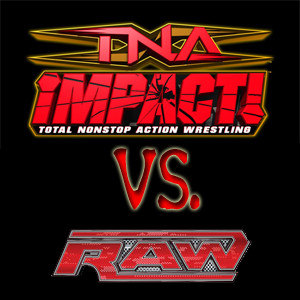 What do you do when the audience knows it’s all a sham? That it’s essentially full-contact “Dancing with the Stars”?
What do you do when the audience knows it’s all a sham? That it’s essentially full-contact “Dancing with the Stars”?
You start over.
If you’ve been watching professional wrestling the past few years, after the initial wear and tear of the Chris Benoit tragedy, it’s obvious they haven’t done that.
The pro wrestling business has always found it easier to completely erase someone from its history. Case in point, WWE superstar John Morrison wrestled his last match with the company this week after not being offered a new contract. As a result, he has been wiped off of the WWE website. It’s like he almost never existed.
It’s so much easier for wrestling promotions and for uneducated fans to focus on the new, the “in,” to only remember someone after their death or when they feel they can cash in on them. That’s been happening quite a lot lately, as there hasn’t been much trendsetting going on the past few years.
Rather than reinvent itself after the heyday of the ’80s and the steroid scandals of the early ’90s, pro wrestling made itself relevant again in the late ’90s by getting edgier. The size of pecks and biceps still mattered, but the bombshells, armed with enough silicone and Botox to keep Joan Rivers happy for a dozen lifetimes, and crazy characters mattered more. Add in a handful of talented athletes whom could actually wrestle and pro wrestling had a winning formula that had it rise in popularity like never before.
Sure, everyone knew it was staged, but it was so goddamn cool.
When pro bowlers start performing the crotch chop after strikes, you know you’ve got a pop culture phenomenon on your hands.
But after the edge the product had worn off and many of the great workers in the industry bodies began to break down, the powers that be decided to have less athleticism and more spectacle on their cards. This meant shorter matches and less “spots.” For those who think a collar and elbow tie-up is a sexual position, a spot is where a wrestler does something high risk to capture the audience’s attention. In the ’50s, it was a piledriver, in the ’80s, it was a DDT. In the ’90s and new millennium, things got complicated. New moves were created and wrestlers actively tried to outperform each other. God forbid. Today, people work with one another and try to balance their performance as much as possible, which, in a nice way, means they pander to the crowd more, and waste time, rather than throw each other realistic, yet make-believe beatings.
The balls to wall approach that made for fantastic bouts 10 years ago, is gone forever, at least in the WWE and TNA, replaced by monotonous routine matches that any dedicated fan can smell. While the industry thrives on routine, as wrestlers have certain moves they use at certain times, the art of suspended disbelief could still be prevalent. Sure, the weaker matches save wrestlers’ bodies and allow them to work longer, but if wrestlers truly cared about their bodies, they’d be in another line of work.
But wrestling is not just about what happens in the ring. The writing that sets the scene matters just as much. In the ’90s, performers cut promos that advanced storylines and made their “fights” interesting, sometimes even captivating. Now, with the WWE adopting a PG rating a few years ago, the illusion is gone. John Cena went from Eminem to Superman and only dedicated fans seemed to be bothered. Young kids loved it and the WWE was able to cash in. In terms of storytelling, there’s only so far you can go when you can’t possibly offend or shock someone. And make no mistake, the WWE, TNA and any other pro wrestling show depends on their story. In spite of being talented, Cena is the best of a weak overall lot, or one that hasn’t been unleashed the way they should be.
Even this generation’s rebel, CM Punk, would have been soft-boiled [in his defense, not by much] when compared to the top stars of the late ’90s. In an interview with Pro Wresting Torch a few years ago, former WCW head Eric Bischoff said that fans have seen it all at this point and it’s harder than ever to keep their attention.
No.
The problem is the creative teams behind major wrestling companies are all out of ideas. And unlike a normal television sitcom, they have no off-season; the show continues every week, rain or shine. As a result, wrestling writers tend to burn out faster than a joint in a Sublime video. The only ways the professional wrestling business can truly refresh itself is by finding a balance between wrestling and the drama and give their writers more time to collaborate and assess if something is working. Even though storylines are often planned months in advance, there’s still a complete lack of polish and precision going on creatively that is too easy to notice.
While companies like TNA and WWE aggressively follow and incorporate social media into their programs, constantly mentioning Twitter and Facebook, they need to listen to their audience more. For far too long, the pro wrestling industry has maintained its carny roots and kept interested parties safety away from the big green curtain. It’s time to expose it for the tired old man it really is, which, at one time had a heart, brains and courage. It’s time he finds them and gives them to those who can make the best use of them.
While the industry is known for its ebb and flow, too many people have attempted to shake things up and fallen flat on their faces lately to make you think anything will change soon.
With that, it’s easy to how difficult a task these people have ahead of them. If you’re a writer, you’re expected to be a provider of consistently potent material. There’s no time to breathe. The same thing goes for the performers. They work hurt and risk serious injury, to put food on the table for their families and for the opportunity to entertain.
Considering this, maybe there isn’t a problem with the industry at all. Maybe this is just the nature of the beast.


Leave a Reply